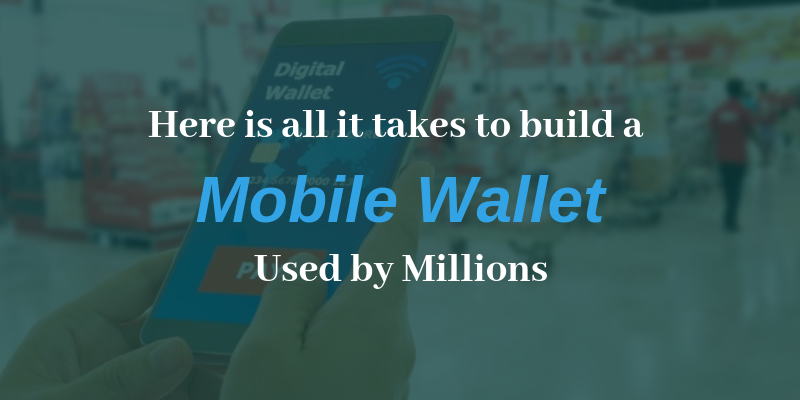Here is all it takes to build a Mobile Wallet Used by Millions
Despite all the uncertainties about human behavior, you can always count on one certain fact- they like convenience. From Uber to Netflix to PayPal- virtually every successful tech product is built upon some degree of convenience. And while this stands true for virtually all domains, it is perhaps most visible in terms of finance. The transition from cash to card to mobile payments is a fine example of this urge to break free from the hassle of payments. It isn’t a coincidence that literally every online/on-demand service comes integrated with a ton of payment options.
More interestingly, while payments have traditionally been confined to banks and large credit card corporations, entrepreneurs can for the first become a part of the lucrative industry through mobile wallets.
1. Why you should build an e-wallet app?
2. What your mobile wallet app should have?
3. How you can build the best wallet solutions?
Without any further adieu, let’s take forward our discussion:
Why you should build a mobile wallet app?
To understand the significance of e-wallets, we’d need a quick detour of payment solutions a whole. When there were no electronic payments, people used cash for most of their purchases. This was inefficient on two levels:
• Cash is hard to carry around or one can simply forget their wallet at home
• Carrying large sums of cash isn’t exactly secure
So until recently, an average consumer used cash for daily purchases and cards for online and big-ticket purchases. Then came mobile wallets and changed the entire landscape because:
• They are seamless to carry around and are secure than both cash and cards
• They are suited for both micro and micro-transactions.
What this means is that mobile wallets are set to play a larger role in not just the online payments but the entire payments ecosystem. This is an opportunity you can’t afford to miss.
What your e-Wallet should have?
Generally speaking, more features than your competitors. And as there are numerous such applications on the market, the room to innovate and improvise is pretty large. Some of the basics include:
Easy Accessibility
The first step to building a successful product is to make people use it and the easiest way to do that is to keep a low barrier for entry. That is, the user onboarding should be as quick and fluid as possible while still keeping considerations in mind.
Diverse use cases
What’s the use of a currency that no one accepts? With mobile wallets, that is perhaps the biggest challenge- getting a wide network of merchants to accept payments from your app. Though you aren’t expected to have an outreach equal to cash or cards, you must at least cover all the bases.
P2P Transfers
Along with paying for services, apps must also have adequate features for P2P fund transfers. Be it wallet-to-wallet, wallet-to-bank, or splitting bills, there numerous options that you can provide for an improved experience.
Omnichannel
One of the biggest misconceptions about digital wallet apps is that they are used only for digital payments. If you wish your app to be really useful and by extension successful, you must break this myth. From online payments to offline PoS and NFC, the more payment channels you cover the wider outreach you would be able to generate.
The point of the matter is that your wallet application must have equal, if not more, resourcefulness as other payment solutions.
How can you build such wallet applications?
The answer to this question depends on your current standing. If you are a tech-related business with even basic know-how, you can hire best mobile app developers to build products on-site. Now if you are an entrepreneur or a business with little to no technical leaning, hiring top app development companies would be in your best interests.
